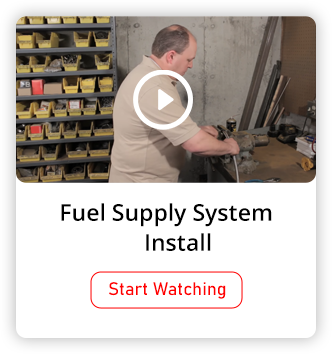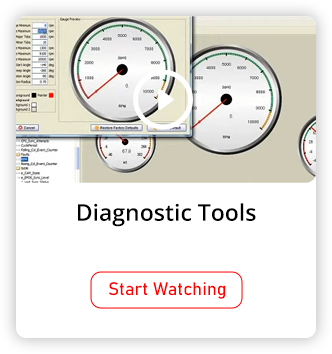Mass Air vs Speed Density
There are two strategies commonly used in engine management. One is Mass Air and the other is Speed Density.
Before we get into the differences, we should go over the very basics of engine management so that those who are not at all familiar with these things are up to speed.
For an engine to run, you must have four things.
1) Air – Air flow at any given time is a function of the combination of the engine parts and how much air is permitted to enter the engine via the throttle blade.
2) Fuel – The proper amount of fuel is added to that air via the fuel injectors.
3) Spark – Spark must occur to ignite the air/fuel mixture and it must happen at the proper time. The time at which this occurs is known as spark advance.
4) Compression – The air fuel mixture must be compressed in order to create the powerful explosion necessary to make power.
Only two of these things are engine management related. Those things are “Fuel” and “Spark”. The other two (Air and Compression) are strictly mechanical and are not controlled by the engine management system. The exception to that rule is electronic throttle control, but that topic is not relevant for the purposes of this article.
In a net shell, engine management is simply a matter of providing the proper amount of fuel and providing spark at the proper time. In order to make an intelligent and informed decision about which engine management system you should choose, it is important to understand the methods used to accomplish these things. Those methods are explained below:
1) Mass Air Engine Management
It's important to understand that the mass of the air being ingested by the engine is the single most important value necessary to determine how much fuel to supply to the engine and to determine what the spark advance should be. A Mass Air engine management system uses a Mass Air Meter to directly measure the mass of the air being ingested by the engine at any given time. You should also understand that the combination of engine parts is irrelevant when using Mass Air engine management. That combination will result in some amount of air mass. Since that air mass is directly measured, the combination of engine parts that resulted in that air mass simply does not matter. And for this reason, you can change that combination of engine parts as often as you'd like. You can even add a supercharger, or a turbocharger and this rule still applies.
The air mass value is used to calculate a value for “Load”. Load is defined as “Ingested Air Mass divided by Potential Air Mass”. It sounds complicated but it isn't. The ingested air mass is simply the reading taken by the mass air meter. The potential air mass is a calculation done by the PCM that uses the engine's cubic inch displacement and RPM.
When you have “Load”, you have everything you need to know. Load will determine what your air/fuel ratio should be. It will also determine what your spark advance should be. That's all there is to it.
2) Speed Density as it is used in OEM applications
Speed Density systems use a method where manifold vacuum and engine RPM are used to calculate the volume of air being ingested by the engine. That estimated volume of air is then corrected for temperature and pressure. There is much more to it than this, but for the purpose of this article, this explanation will suffice. There are several articles on the web that explain this in greater detail if you care to gain a deeper understanding of speed density.
I am often asked “Why do so many of the OEM auto manufacturers use Speed Density”. In the OEM, where cost is a major factor, there are obvious cost benefits to not having to install a Mass Air Meter in every vehicle. For that reason, and that reason alone, some OEM manufacturers will use speed density engine management. In an OEM application, speed density makes a lot of sense. Think about how much money they can save by not having to buy millions of mass air meters!
The method the OEM manufacturers use to do this is very time consuming and very expensive, but worth it since they can amortize this time over hundreds of thousands of vehicles that are all using the same engine.
That last sentence is very important. They will have an entire team of calibrators spend about six months mapping out a specific combination of engine parts in a controlled environment on an engine dyno. They will hold that engine at every possible combination of RPM, throttle position, temperature, and atmospheric pressure and use a mass air meter to record the air mass at each operating point. This data is used to calculate the Load values for the calibration (or “tune” as many people call it) that will be used for that engine. It is important to understand that the Speed Density systems used in the OEM still use load for their fueling and spark advance calculations.
They call this speed density, but a mass air meter was used to generate the data needed. This method works quite well, but you obviously cannot justify doing this in the aftermarket. In the aftermarket, every engine is different. You can't justify the time, even if you had access to the equipment necessary to do this. Not for one engine… For this reason, this version of speed density is not applicable to the aftermarket but is important to understand how this is done.
3) Speed Density as it is used in the aftermarket.
Let’s not get into speed density as it was used in the aftermarket in days past. Although this is still the basis of today’s aftermarket speed density systems, those archaic methods are rarely used anymore.
These days, speed density systems are almost always “Self-Learning” systems. While much better than the old methods, due to the significant savings in the amount of time spent tuning these, the simple truth is that it is just a faster method to get to the same old incorrect result.
The problem… You simply do not have the information you need to create a proper tune, because you have no method to measure air mass, and therefore no way to calculate “Load”.
The process... Tell the ECU what air/fuel ratio you want under the varying operating conditions. The “Self-Learning” systems will use feedback from a wide band oxygen sensor to achieve those values. Here is the problem… Where do you come up with those values? The answer? You guess until it runs.
Idle is simple. An air/fuel ratio of 14.7:1 will work. Experiment from there. Wide open throttle is a bit more involved but still simple. You experiment with values on the dyno until it makes max power. Not complicated but time consuming and expensive. The rest, which is everything in between, is just a bunch of guess work until you get it to run reasonably well. Understand that there are too many possible scenarios to ever get this anywhere near as good as it would be using a mass air engine management system. The simple truth is that everything in between idle and wide-open throttle is where you spend 99.9% of your time when driving your vehicle and it's also where you get the worst results.
Don't confuse “Self-Learning” with “Self-Tuning”, which is what many manufacturers call it. There is no such thing as self-tuning. The tuner still has to dictate to the ECU what the air/fuel ratios will be, and without a value for load, it’s all just guesswork.
How about spark advance? Speed Density offers you nothing to use to come up with proper spark advance values. Understand that spark advance is half the battle, and all you can do is guess.
You should also know that speed density systems work poorly with aggressive camshafts. Speed density systems rely heavily on the reading from the Manifold Absolute Pressure (MAP) sensor. Aggressive cams produce little vacuum and therefor little for the MAP sensor to work with.
Additionally, speed density systems need to be re-tuned every time you make a change to the engine. Even a small change. That’s great for the tuning shop. Not so great for you.
There are two reasons why an aftermarket EFI manufacturer wants to sell you a speed density system. Neither of them benefits the customer. First, they are less expensive to manufacture. Second, they put the burden of getting your engine to run properly on the end user.
A simple analogy.
If you want to know what the temperature is inside your house, which of these methods would you choose?
1) Read the thermometer inside your house.
2) Read the temperature outside and then figure for the output of your heating system, the R value of your walls and your roof, then apply all of this to some complex equation and with some reasonable amount of accuracy, calculate the temperature in your house.
As ridiculous as option 2 sounds, this is no different than using speed density. You would of course measure the temperature with a thermometer. For the same reason, you should be measuring your Air Mass with a Mass Air Meter.
But isn’t a Mass Air Meter a restriction?
It can be… Much like your intake manifold, or your throttle body, or your air cleaner can be a restriction if you choose the wrong one. For nearly 30 years now, Pro-M Racing has been selling Mass Air Meters that can support as much as 2000 horsepower. If that is not enough, then we can use two of them!
How about cost?
The Pro-M EFI system is comparable in cost to any decent system. No, we're not talking about the throttle body stuff. Those systems aren't even worth buying, but that's a whole other conversation. Compare the initial cost of our system to any of the decent ones out there and you'll see it is about the same. But the Pro-M EFI system is much easier to install, much easier to use, has worlds better technical support, and will save you thousands in money spent at the dyno. In the end, our system will cost you much less than what the others do and will give you much better results.
A final thought…
You are obviously buying an engine management system to make your engine run well, make power, and provide the best fuel economy possible. Given that those things are dictated entirely by air/fuel ratio and spark advance, shouldn't you buy an engine management system that will do those things properly?







